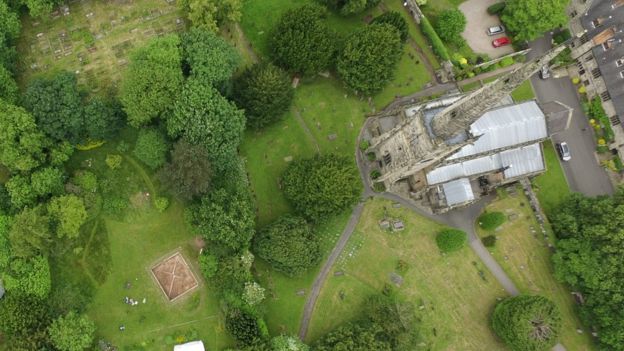
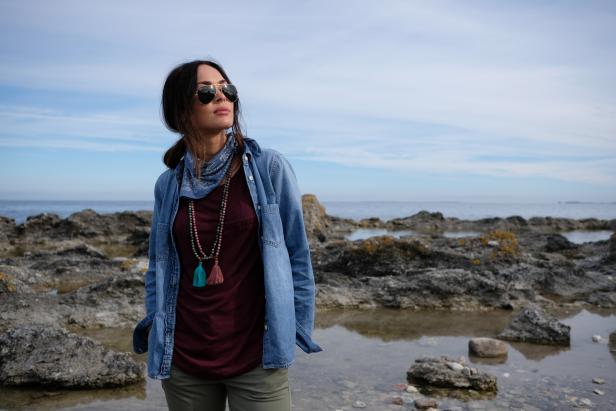
After watching tonight’s episode of Legends of the Lost with Megan Fox, I have to say it was unsurprising and didn’t stray much from my prediction last month. If you read my previous post in November about the name change and episode line-up with descriptions, you’ll notice that I got the order wrong with at least the first two episodes. But I was reflecting what the Travel Channel site had up at the time. The Viking episode ended up being the premiere rather than the Stonehenge episode.
Still, if there are only one or two close-to-truth episodes, this one is probably it. I didn’t find it overly objectionable beyond Fox’s New-age, over-acceptance of the supernatural and a few missed-opportunities with exploring gender roles in the archaeological record. The travel scenes were on-par with anything you might expect from the Travel Channel and the camera crew did a fine job of capturing the beauty of Scandinavia. There was, however, a segment where Fox met up with a self-professed “seeress and shaman” to spend the night alone in the woods on a “Viking visionquest.”
This is where Fox said things like, “some say magic is science we don’t understand yet,” and ” I believe in magic…,” and “I’m really sensitive to energies and spirits…”
Outside of this 10 min or so segment that starts over half-way in, the rest of the episode wasn’t awful. Fox interviewed several archaeologists and showed some really cool sites. She seemed to narrate a bit of embellishment and hyperbole in addition to what the professionals were saying, however.
During the first half of the hour-long show, in a segment with archaeologist Marianne Moen, the Birka Warrior burial was brought up, and Fox mentioned that resent DNA results showed that this individual was actually female. It was long held that this was the burial of a male warrior, but with relatively recent advances in ancient DNA it’s now possible to get more accurate results, which show the remains to be female.
Next, Fox speaks with archaeologist Dan Carlsson who is excavating a Late medieval farmstead on Gotland, an island off the coast of Sweden. It’s there that Carlsson (not to be confused with Minnesota Vikings’ kicker Dan Carlson—different Viking) and his students uncovered the burials of the inhabitants with grave goods like brooches and a crystal that Carlsson showed to Fox.
From there, Fox visited with Leszek Garde?a, an archaeologist who wrote the book, (Magic) Staffs in the Viking Age (2016). Garde?a showed Fox what is considered the largest, most lavish burial of Viking era, the Oseberg burial, which consisted of a ship containing the burials of two women: one at least 80 years of age; the other in her 50s. He also allowed Fox to see an iron staff probably believed by its Viking owner to hold or at least channel magical power.
After meeting with Garde?a, Fox did the New Age segment in the woods, which was a waste of time both intellectually and cinematically since most of it was in the dark. And it was nonsensical, irrational, etc. It would have been more interesting to delve into the beliefs of the self-proclaimed shaman or “seeress” to explore what she believed and why. But Fox bought it all hook, line, and sinker and the two were quite the pair of New Age girlfriends for the segment. I half-expected Gwyneth Paltrow to show up.
The last two stops included one at the Oslo Library with Kim Hjardar, where a couple of very old books were examined, including one by Saxo Grammaticus, that recounted stories of women among the ranks of Vikings. The other was with Catrine Jarman, a bio-archaeologist working at excavations of the Great Viking Army burials at Repton in Derbyshire, U.K. The Minimum Number of Individuals (MNI) in the mass grave at Repton is 264 with 20 % of these being female.
There was actually another encounter with a young lady who was some sort of a mythologist and she sat with Fox on a park bench discussing Norse mythology. I’m pretty sure I drifted off to sleep for a couple minutes, so I missed the majority of this segment, which I was watching live, so I really can’t comment on it.
The Megan Fox Reaction to Reality
Fox narrated the entire episode and, during both the narration and the live action sequences while she was visiting sites, her hyperbole and reaction to all things supernatural was over the top.
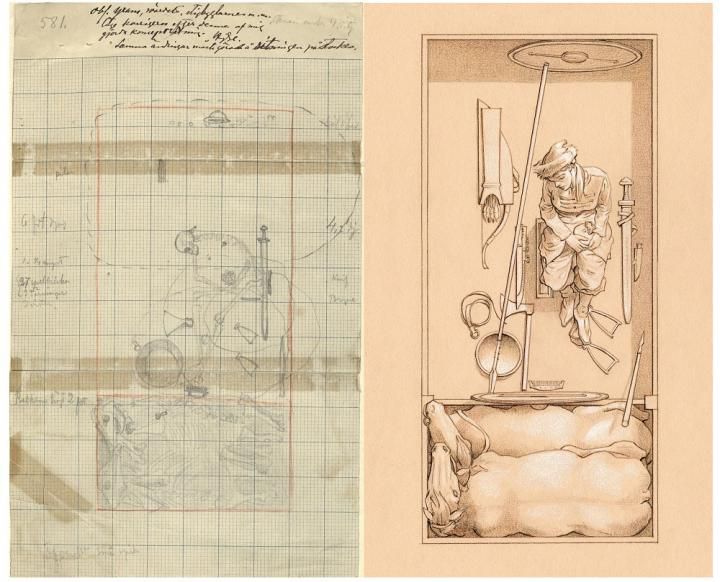
In Borre, Norway with Marianne Moen, she responded that the news of the Birka Warrior’s true sex, “set the archaeology world ablaze.” It didn’t. There were definitely some people who were skeptical of the idea that the new DNA tests showed female DNA—and rightfully so since ancient DNA (aDNA) is a tricky beast. It is extremely easy for samples to become contaminated, etc. But the new research appears sound and few if any still hold out that this is a male Viking. In fact, the idea that the burial is very probably a female is considered exciting by most archaeologists who are interested in Viking archaeology. I suppose there are probably a few die-hard hold-outs insisting that the Birka Warrior is a male (maybe some original researchers), but the archaeological community is always ready to revise and amend our already contingent understanding of the past with new data or evidence.
But, to be honest, most archaeologists are so involved in whatever niche area they specialize in, that it is nearly impossible to set the “archaeology world ablaze.” What happens in one niche will invariably go utterly unnoticed in another. The statement does, however, make for a good headline. Much like “it will rewrite history!” or “archaeologists are stunned!” Or “stumped,” “mystified,” etc.
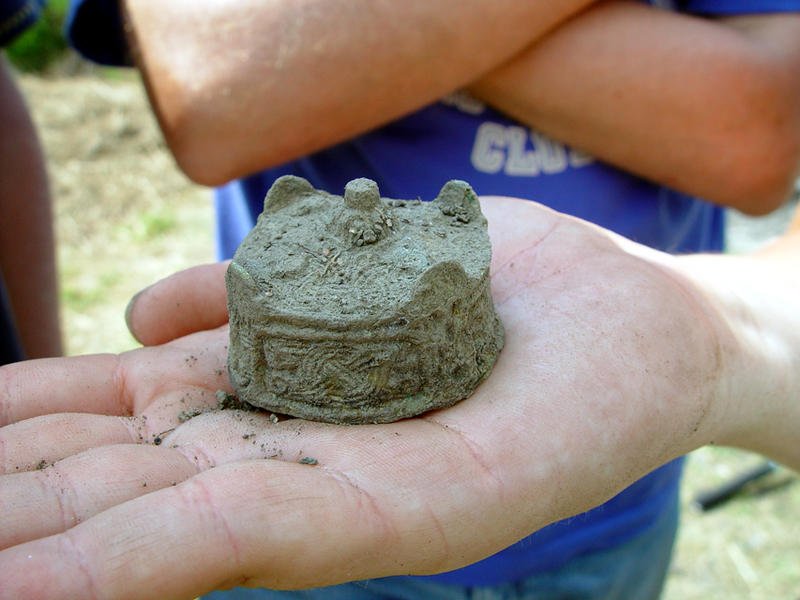
With Dan Carlsson, who showed Fox a crystal artifact, she baby-talked with delight as she said, “it looks like magic!” Carlsson very clearly is saying that this island, this farmstead is a center of trade and he’s giving women credit where credit is due: they were traders and more deeply involved in society than just homemakers. Fox carries that to her narration as, “if Viking women were traveling the world as traders, they weren’t just homemakers…”
In response to Leszek Garde?a’s display of the “magical” iron staff, Fox suggested that “maybe there was something magical about that first staff,” and that the pair of women from the viking boat burial were possibly “unrivaled on the battlefield…” because they had mastered a type of magic. Garde?a is clearly speaking of what people believed and that objects like this staff are “emblems of great power.” Fox, on the other hand, is clearly approaching the subject as if the magic were real.
At the beginning of her visit with Cat Jarman, Fox said, “I’ve discovered that Viking society was not the the male dominated patriarchy our history books led us to believe…” and at the end of he show she closed with “history has said that Viking women stuck to gender stereotypes…”
Out Fox’d
I think gender stereotypes about women in the Viking age depend upon how well read a given generation is in historical literature. Megan Fox admits in various interviews that her own interest in academics was lacking with exception of a Greek mythology class she once took. She’s remarked to interviewers that she has little love for science and academia as an institution and finds “mainstream” archaeology and history suspect. We can see in this first episode of Legends that this might be the case only because she’s kept the “mainstream” at arms length or as an abstract idea or concept. She seemed very at ease and very interested once she was face-to-face with real archaeologists, but I got the sense that she was still hearing what she wanted.
I don’t think there have been any drastic changes in the body of knowledge regarding the roles of women in Viking culture. It’s true that there are new data, as with the Birka Warrior, and fresh data, as with the Gotland and Repton burials. But Fox didn’t justify her statement that “this changes everything.” We’ve always had tales of Viking women like Hetha and Visna, who fought for the Danish King Harald Wartooth at the Battle of Brávellir. And Vebiorg, who fought for Harald’s Swedish nephew Hring on the opposing side. Hetha even gets the chance to rule a portion of Denmark after Hring defeats Harald.
The problem of gender stereotypes probably isn’t historical so much as it is modern. I think this is something that went right over Megan Fox’s head. She had such an opportunity to tell a wonderful story of women in the archaeological record of the Viking Era and barely—just barely—touched it. Instead of highlighting the importance of the two women in the Oseberg ship burial, she went on about the magic and how they might have been given power by an iron staff. Rather than point out how men in burials like this would be perceived as important leaders or chieftains of their societies (as with the Gokstad burial in Vestorld, Norway), Fox is interested only in describing them as Viking warriors “unrivaled on the battlefield” because of their magic staff. The significance of the burial completely escaped her. The time, effort, and sheer amount of resources involved clearly indicate a beloved leader. Were one of the people on the Oseberg ship burial a man, he would undoubtedly be called a king.
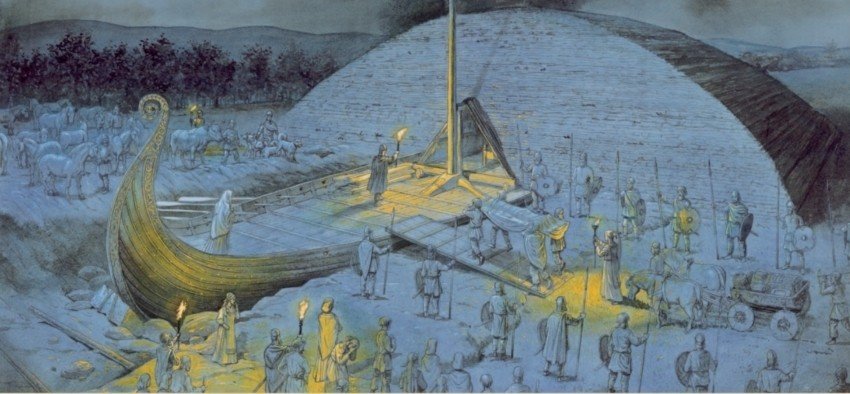
Similarly, Fox seemed to miss the very essence of what Dan Carlsson was trying to describe about gender roles among the villagers at Gotland. Just as she seemed to miss it with Cat Jarman at Repton. These were women who were trusted to do business and relied upon to defend against attackers. Respected for their ability to stand side-by-side with their male counterparts in battle. There were so many more questions that Fox could have asked each to explore the extent to which women were important both in Scandinavia and with the apparent Great Viking Army abroad in England.
And, if Fox were truly interested in gender roles and the stereotyping of women, I would have expected her to compare and contrast these Viking women of history to these strong, positive role models of women right before her: Marianne Moan is a wonderful feminist archaeologist who has written some very thought-provoking words on gender, status, and power in the Viking Age as well as the modern. And Catrine Jarman is a great example for young women, her research has taken her from Easter Island to Derbyshire and she’s not afraid to share her work, talk to the public, and be a role model. I would have loved to hear Fox talk to her more about the role of women in modern archaeology and the sciences in general. I would have even been interested in hearing what Maria Jacobsen—the “seeress” / shaman—thought of women in the Viking Age and how she perhaps perceives herself as honoring or continuing that role.
I suspect this was Fox’s most mainstream episode and it will go downhill from here.
Leave a Reply
You must be logged in to post a comment.